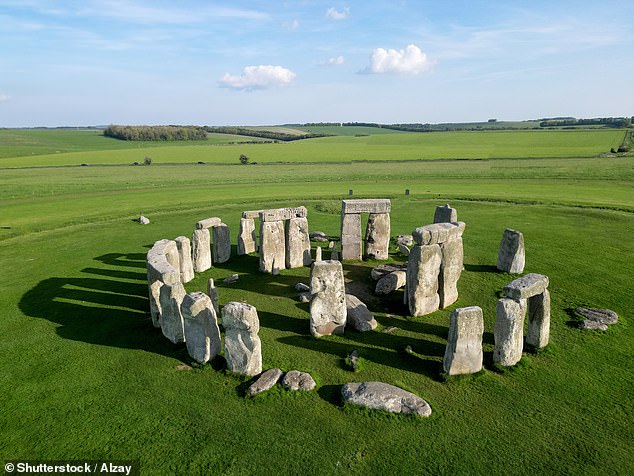
Solved: How Stonehenge’s Welsh Megaliths Were Transported – 5 Enduring Enigmas
Stonehenge’s Enduring Mysteries: What We Still Don’t Know

Scientists continue to unravel Stonehenge’s secrets, but mysteries remain. (Image: Daily Mail)
1. How Were the Stones Transported?
Stonehenge’s stones come from three distant sources:
- Sarsens: 20-30 ton sandstone pillars from West Woods, 20 miles away.
- Bluestones: Smaller stones from Wales’ Preseli Hills, 125 miles distant.
- Altar Stone: A 6-ton slab possibly from northern Scotland, over 435 miles away.
The methods used to move these stones remain debated. While theories suggest sledges greased with pig fat, log rollers, or even stone ball bearings, no definitive evidence survives. Recent pottery findings near Stonehenge hint at grease buckets for lubricating sleds—potentially requiring just 20 people per stone. Yet, the lack of preserved tools leaves this mystery unsolved.

Theories suggest sledges or stone ball bearings eased transportation. (Image: Daily Mail)
2. Why Was Stonehenge Built?
Though aligned with solstices, Stonehenge’s purpose transcends mere astronomy. Its elaborate design—over-engineered for tracking seasons—hints at deeper symbolic or ceremonial roles. Dr. Rob Ixer (UCL) likens it to a ritualistic endeavor: moving stones from across Britain may have unified Neolithic tribes, turning construction into a sacred act. Comparatively, cultures like Indonesia’s Nias people moved megaliths as communal rituals, suggesting Stonehenge’s journey mattered as much as its final form.

Stonehenge’s solstice alignment remains central to its mystery. (Image: Daily Mail)
3. Why Salisbury Plain?
The site was sacred long before Stonehenge. A 2016 excavation uncovered a 5,000-year-old ceremonial complex 1.5 miles away, where Neolithic people feasted and smashed pottery. Natural east-west ridges aligning with solstice sunsets may have marked it as spiritually significant. However, why this plain became a focal point for distant cultures—drawing stones from Wales and Scotland—is unclear. Timothy Daw, a Stonehenge expert, suggests it may have been a cultural crossroads.
4. Why Was It Repeatedly Altered?
Stonehenge evolved over centuries:
- 3000 BC: A burial site with 56 cremation-filled pits.
- 2500 BC: Sarsens and bluestones erected.
- Later changes: Bluestones rearranged into an oval, then a horseshoe.
Each shift likely reflected changing beliefs or leadership. Dr. Ixer notes, “They kept redefining its meaning,” but the reasons—ritual, political, or social—are lost to time.

Stonehenge’s layout changed drastically over millennia. (Image: Daily Mail)
5. Where Are the Missing Stones?
Archaeologists estimate up to 11 bluestones are missing. Originally placed in 56 “Aubrey Holes,” only 43 remain. While some stones were repurposed or stolen by tourists (19th-century visitors famously chipped off souvenirs), others vanished entirely. Despite searches, no remnants appear in nearby buildings or fields, deepening the enigma.
Conclusion
Stonehenge’s allure lies in its unanswered questions. From engineering feats to spiritual symbolism, each discovery sparks new debates. As Dr. Ixer says, “It’s about the ceremony, the participation”—a testament to humanity’s timeless drive to connect with the cosmos and each other.

The whereabouts of Stonehenge’s missing stones remain unknown. (Image: Daily Mail)
Word count: ~600


